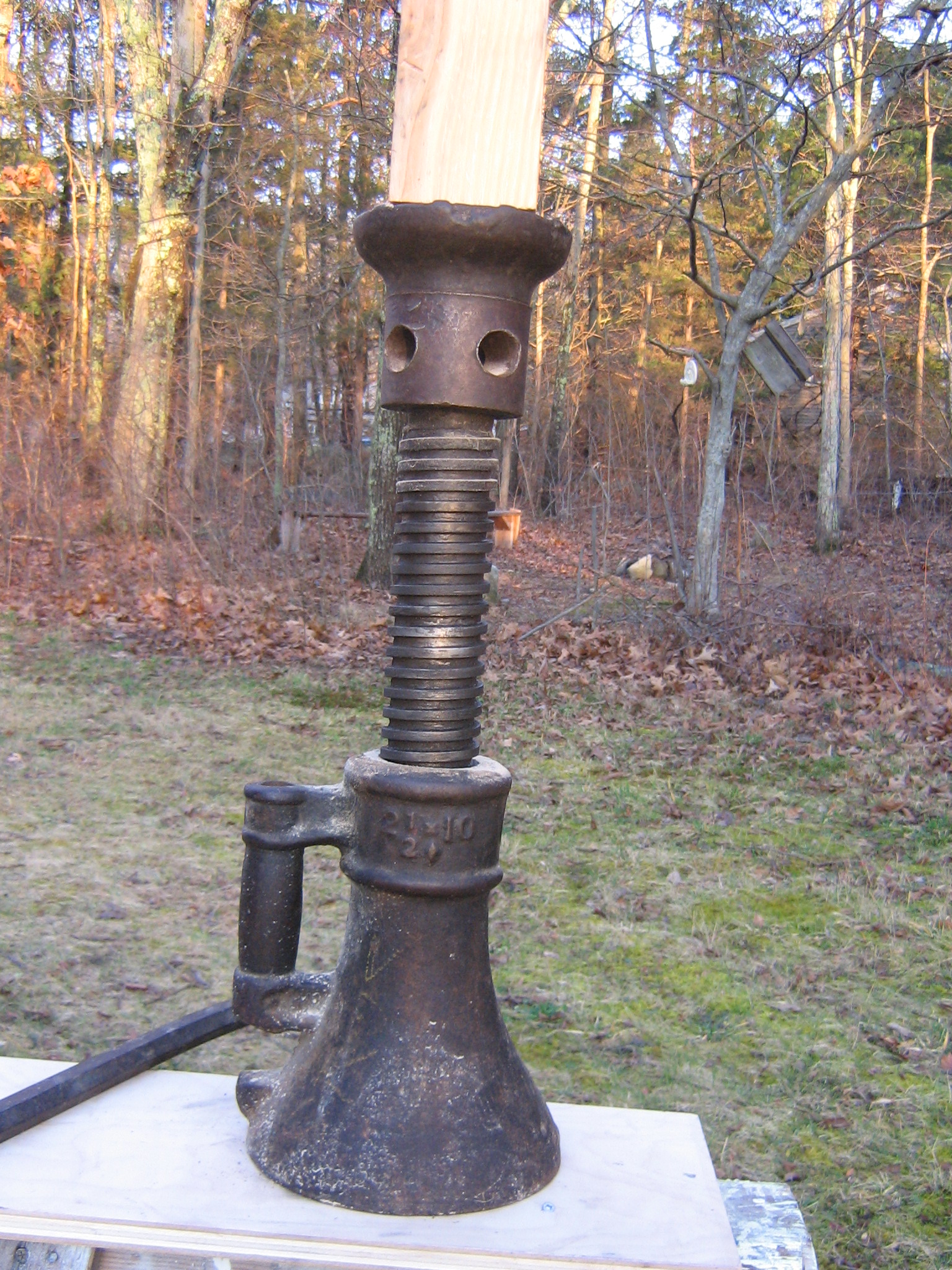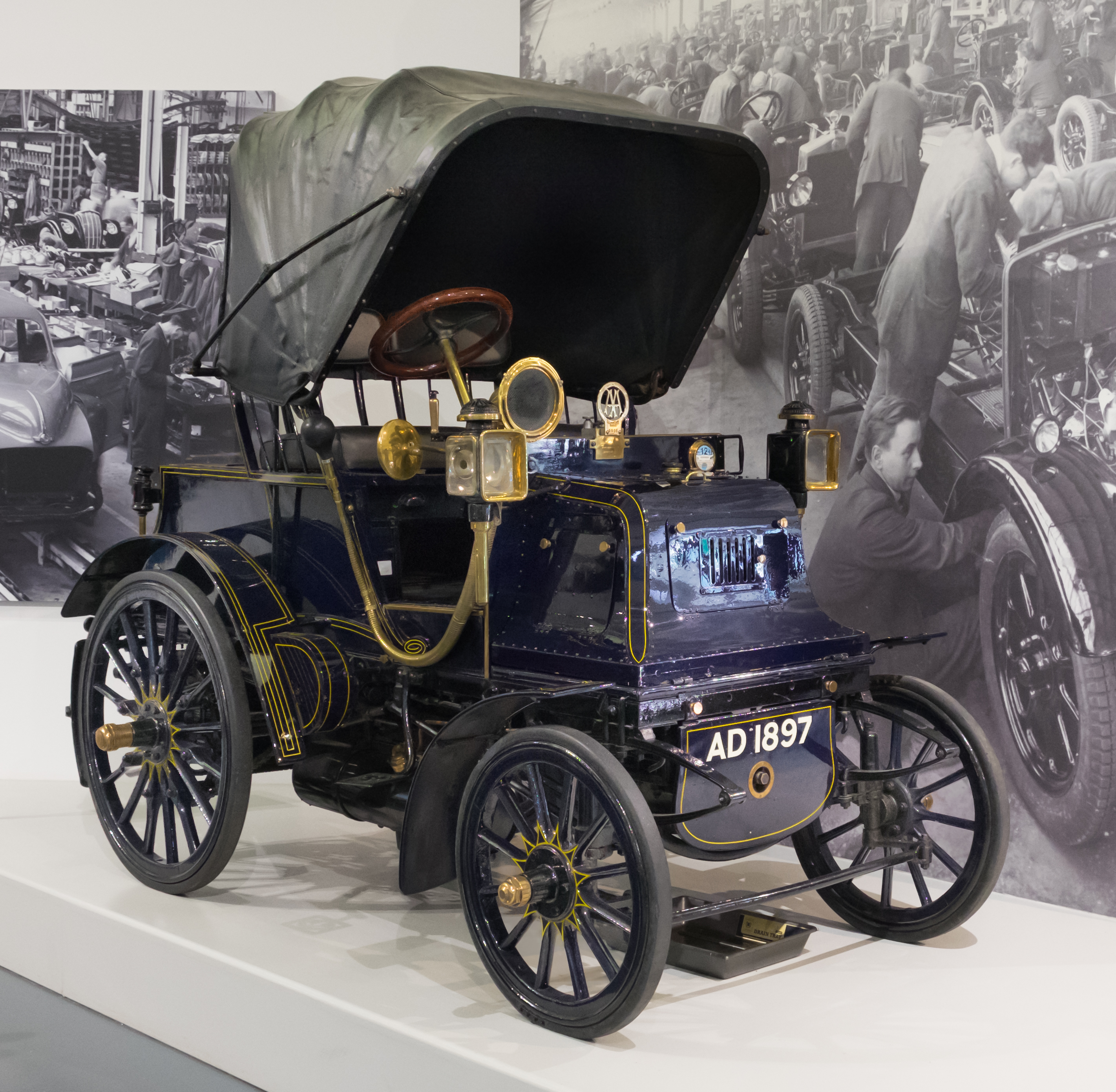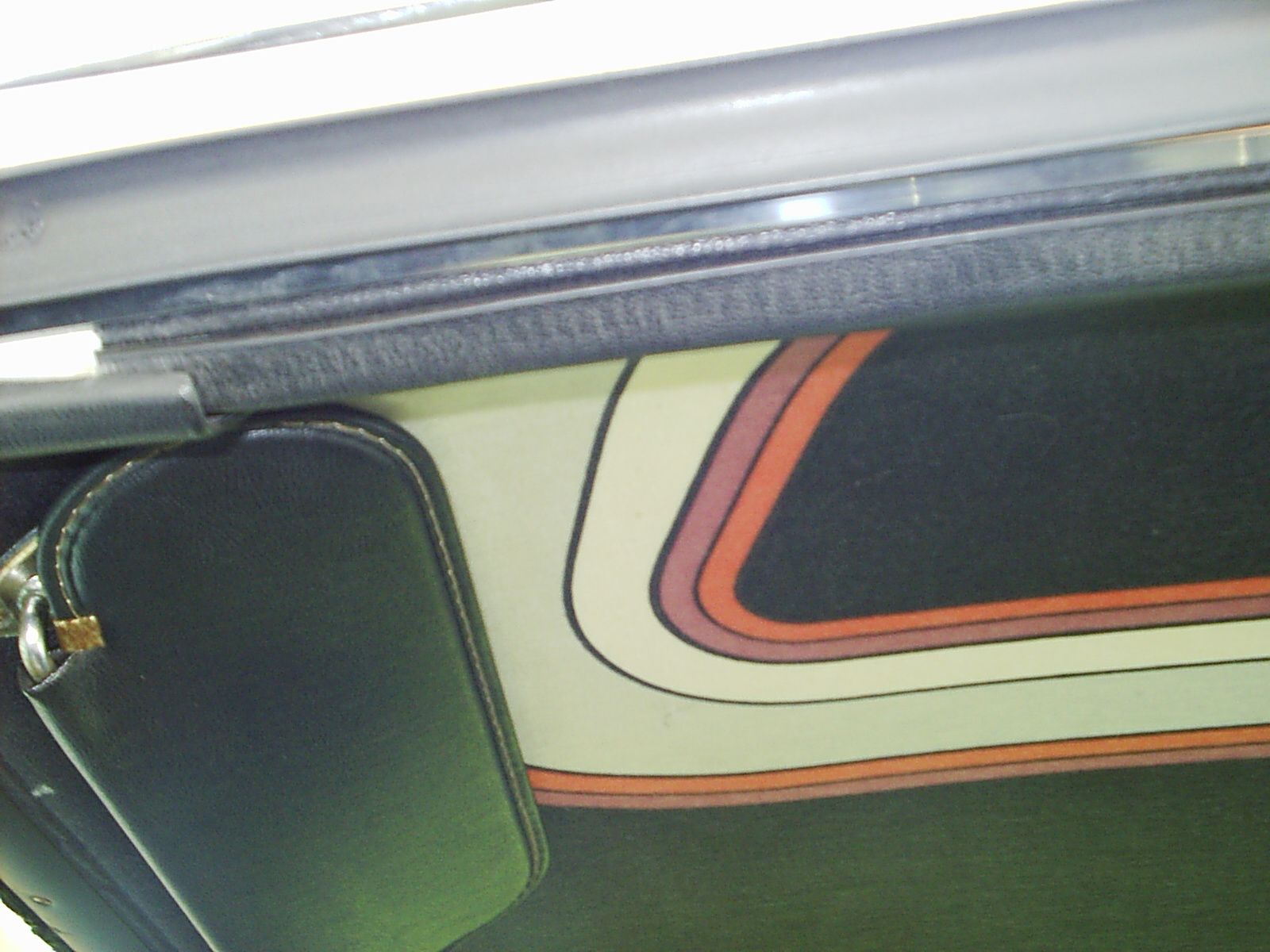|
Apperson Six Sport Sedan
The Apperson Six Sport Sedan was a car manufactured by the Apperson Company of Kokomo, Indiana. Apperson Six Sport Sedan specifications (1926 data) * Color – Imperial blue, maroon, and gray-green * Seating Capacity – Five * Wheelbase – 120 inches * Wheels - Disc * 'Tires'' - 32” x 5.77” balloon * Service Brakes – Mechanical four wheel brakes * Engine - Six cylinder, vertical, cast en block, 3-3/16 x 4-1/4 inches; head removable; valves in head; H.P. 24.4 N.A.C.C. rating * Lubrication – Force feed * Crankshaft - Four bearing * Radiator – Tubular * Cooling – Thermo-syphon * Ignition system – Storage Battery * Starting System – Two Unit * Voltage – Six to eight * Wiring System – Single * Gasoline System – Vacuum * Clutch – Disc * Transmission – Selective sliding * Gear Changes – 3 forward, 1 reverse, mechanically operated * Drive – Spiral bevel * Rear Springs – Three-quarter elliptic * Rear Axle – Semi-floating * Steering Gear – Wo ... [...More Info...] [...Related Items...] OR: [Wikipedia] [Google] [Baidu] |
Apperson
The Apperson was a brand of American automobile manufactured from 1901 to 1926 in Kokomo, Indiana. Company history The company was founded by the brothers Edgar and Elmer Apperson shortly after they left Haynes-Apperson; for a time they continued to use a FR layout-mounted flat-twin engine, following it with a horizontal four. Apperson cars In 1904, Apperson offered vertical fours in two models. The 1904 ''Apperson Touring Car'' was a touring car model. Equipped with a tonneau, it could seat 6 passengers and sold for US$6000. The vertical-mounted straight-4, situated at the front of the car, produced 40 hp (29.8 kW). A 4-speed transmission was fitted. The steel-framed car weighed 2800 lb (1270 kg). The wheel base was 96 inches. The Apperson offered electric lights, a novelty for the time, and used a modern cellular radiator. The 25 hp (18.6 kW) version weighed 1800 lb (816 kg) and sold for US$3500. In 1906 the company cataloged ... [...More Info...] [...Related Items...] OR: [Wikipedia] [Google] [Baidu] |
Jack (device)
A jack is a mechanical lifting device used to apply great forces or lift heavy loads. A mechanical jack employs a screw thread for lifting heavy equipment. A hydraulic jack uses hydraulic power. The most common form is a car jack, floor jack or garage jack, which lifts vehicles so that maintenance can be performed. Jacks are usually rated for a maximum lifting capacity (for example, 1.5 tons or 3 tons). Industrial jacks can be rated for many tons of load. Etymology The personal name ''Jack'', which came into English usage around the thirteenth century as a nickname form of ''John'', came in the sixteenth century to be used as a colloquial word for 'a man (of low status)' (much as in the modern usage 'jack of all trades, master of none'). From here, the word was 'applied to things which in some way take the place of a lad or man, or save human labour'. The first attestation in the ''Oxford English Dictionary'' of ''jack'' in the sense 'a machine, usually portable, for lifting ... [...More Info...] [...Related Items...] OR: [Wikipedia] [Google] [Baidu] |
Brougham (car Body)
A brougham (pronounced , , , or ) was originally a car body style where the driver sat outside and passengers seated within an enclosed cabin, as per the earlier brougham horse-drawn carriage. Similar in style to the later town car, the brougham style was used on chauffeur-driven petrol and electric cars. In later years, several manufacturers (mostly in the United States) have used the term brougham as a model name or trim level on cars where the driver is in the cabin with the passengers (i.e. cars that do not use the brougham body style). Early broughams As a car body style, a brougham was initially a vehicle similar to a limousine but with an outside seat in front for the chauffeur and an enclosed cabin behind for the passengers. As such, it was a version of the town car but, in strict use of the term, with the sharply squared rear end of the roof and the forward-curving body line at the base of the front of the passenger enclosure that were characteristic of the nineteenth ... [...More Info...] [...Related Items...] OR: [Wikipedia] [Google] [Baidu] |
Phaeton Body
A phaeton is a style of open automobile without any fixed weather protection, which was popular from the 1900s until the 1930s. It is an automotive equivalent of the horse-drawn fast, lightweight phaeton carriage. A popular style in the US from the mid–1920s and continuing into the first half of the 1930s was the dual cowl phaeton, with a cowl separating the rear passengers from the driver and front passenger. Phaetons fell from favour when closed cars and convertible body styles became widely available during the 1930s. Eventually, the term "phaeton" became so widely and loosely applied that almost any vehicle with two axles and a row or rows of seats across the body could be called a phaeton. Convertibles and pillarless hardtops were sometimes marketed as "phaetons" after actual phaetons were phased out. History The term ''phaeton'' had historically described a light, open four-wheeled carriage. When automobiles arrived it was applied to a light two-seater with minim ... [...More Info...] [...Related Items...] OR: [Wikipedia] [Google] [Baidu] |
Sun Visor
A sun visor is a component of an automobile located on the interior just above the windshield (also known as the windscreen). They are designed with a hinged flap that is adjustable to help shade the eyes of drivers and passengers from the glare of sunlight. Design Starting in 1924, automobiles such as the Ford Model T began to include an exterior sun visor on its closed body versions. Other early automobiles also had externally attached sun visors to their windshields until 1931, when interior mounts were introduced. As automobile design advanced with windshields mounted on an angle to lessen wind resistance, the outside or "cadet-type" sun visors were no longer seen on cars starting from 1932. Henceforth, sun visors were mounted inside the vehicle, making the hinged flap easier to reach and adjust. Most modern cars have two sun visors, one for the driver's side and a second for the passenger's side, with the rear-view mirror often mounted in between the two sun visors. Each ... [...More Info...] [...Related Items...] OR: [Wikipedia] [Google] [Baidu] |
Cowl
A cowl is an item of clothing consisting of a long, hooded garment with wide sleeves, often worn by monks. Originally it may have referred simply to the hooded portion of a cloak. In contemporary usage, however, it is distinguished from a cloak or cape (''cappa'') by the fact that it refers to an entire closed garment. Today it is worn primarily by most Catholic and Anglican monks when participating in liturgical services. Religious usage Developed during the Early Middle Ages, it became the formal garment for those in monastic life. Both St. Jerome and John Cassian refer to it as part of a monk's dress. In modern times, it is worn over the habit during liturgical services. Among the Benedictines, in choir, at chapter, and at certain other ceremonial times, a long full gown with large flowing sleeves, called a "cowl", is worn over the ordinary habit. Black has been the prevailing color, hence the term "black monk" has come to signify a Benedictine. Previous generations had ... [...More Info...] [...Related Items...] OR: [Wikipedia] [Google] [Baidu] |
Snubber
A snubber is a device used to suppress ("snub") a phenomenon such as voltage transients in electrical systems, pressure transients in fluid systems (caused by for example water hammer) or excess force or rapid movement in mechanical systems. Electrical systems Snubbers are frequently used in electrical systems with an inductive load where the sudden interruption of current flow leads to a large counter-electromotive force: a rise in voltage across the current switching device that opposes the change in current, in accordance with Faraday's law. This transient can be a source of electromagnetic interference (EMI) in other circuits. Additionally, if the voltage generated across the device is beyond what the device is intended to tolerate, it may damage or destroy it. The snubber provides a short-term alternative current path around the current switching device so that the inductive element may be safely discharged. Inductive elements are often unintentional, arising from the curr ... [...More Info...] [...Related Items...] OR: [Wikipedia] [Google] [Baidu] |
Armrest
An armrest is a part of a chair, where a person can rest their arms on. Armrests are built into a large variety of chairs such as automotive chairs, armchairs, sofas, and more. Adjustable armrests are commonly found in ergonomic office chairs. Armrests should support the forearm, which reduces neck and head pain. Office chairs Armrests in office chairs are meant to be adjustable to account for the user's height. This is due to the long hours spent sitting in an office, increasing risks of an ergonomic hazard. Since the introduction of the computer into the workspace, armrests have been more important. Like office chairs, gaming chairs feature an armrest to support the user's arm during gaming sessions. Armchair An armchair is a chair with prominent armrests. Restraints Restraint chairs are chairs with restraints, which allow an individual to be restrained, thereby preventing them from leaving the chair. Such chairs often feature an armrest, which is used to restrain the ar ... [...More Info...] [...Related Items...] OR: [Wikipedia] [Google] [Baidu] |
Fuel Gauge
In automotive and aerospace engineering, a fuel gauge is an instrument used to indicate the amount of fuel in a fuel tank. In electrical engineering, the term is used for ICs determining the current State of Charge of accumulators. Motor vehicles As used in vehicles, the gauge consists of two parts: * The sending unit - in the tank * The indicator - on the dashboard The sending unit usually uses a float connected to a potentiometer, typically printed ink design in a modern automobile. As the tank empties, the float drops and slides a moving contact along the resistor, increasing its resistance. In addition, when the resistance is at a certain point, it will also turn on a "low fuel" light on some vehicles. Meanwhile, the indicator unit (usually mounted on the dashboard) is measuring and displaying the amount of electric current flowing through the sending unit. When the tank level is high and maximum current is flowing, the needle points to "F" indicating a full tank. When th ... [...More Info...] [...Related Items...] OR: [Wikipedia] [Google] [Baidu] |
Ammeter
An ammeter (abbreviation of ''Ampere meter'') is an instrument used to measure the current in a circuit. Electric currents are measured in amperes (A), hence the name. For direct measurement, the ammeter is connected in series with the circuit in which the current is to be measured. An ammeter usually has low resistance so that it does not cause a significant voltage drop in the circuit being measured. Instruments used to measure smaller currents, in the milliampere or microampere range, are designated as ''milliammeters'' or ''microammeters''. Early ammeters were laboratory instruments that relied on the Earth's magnetic field for operation. By the late 19th century, improved instruments were designed which could be mounted in any position and allowed accurate measurements in electric power systems. It is generally represented by letter 'A' in a circuit. History The relation between electric current, magnetic fields and physical forces was first noted by Hans Christian Ør ... [...More Info...] [...Related Items...] OR: [Wikipedia] [Google] [Baidu] |
Speedometer
A speedometer or speed meter is a gauge that measures and displays the instantaneous speed of a vehicle. Now universally fitted to motor vehicles, they started to be available as options in the early 20th century, and as standard equipment from about 1910 onwards. Other vehicles may use devices analogous to the speedometer with different means of sensing speed, eg. boats use a pit log, while aircraft use an airspeed indicator. Charles Babbage is credited with creating an early type of a speedometer, which was usually fitted to locomotives. The electric speedometer was invented by the Croatian Josip Belušić in 1888 and was originally called a velocimeter. Operation The speedometer was originally patented by Josip Belušić (Giuseppe Bellussich) in 1888. He presented his invention at the 1889 Exposition Universelle in Paris. His invention had a pointer and a magnet, using electricity to work. German inventor Otto Schultze patented his version (which, like Belušić's, ra ... [...More Info...] [...Related Items...] OR: [Wikipedia] [Google] [Baidu] |
Rearview Mirror
A rear-view mirror (or rearview mirror) is a flat mirror in automobiles and other vehicles, designed to allow the driver to see rearward through the vehicle's rear window (rear windshield). In cars, the rear-view mirror is usually affixed to the top of the windshield on a double-swivel mount allowing it to be adjusted to suit the height and viewing angle of any driver and to swing harmlessly out of the way if impacted by a vehicle occupant in a collision. The rear-view mirror is augmented by one or more side-view mirrors, which serve as the only rear-vision mirrors on trucks, motorcycles and bicycles. History Among the rear-view mirror's early uses is a mention by Dorothy Levitt in her 1909 book ''The Woman and the Car'' which noted that women should "carry a little hand-mirror in a convenient place when driving" so they may "hold the mirror aloft from time to time in order to see behind while driving in traffic". However, earlier use is described in 1906, in a trade ... [...More Info...] [...Related Items...] OR: [Wikipedia] [Google] [Baidu] |







